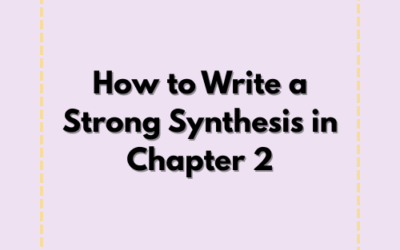The literature review is an essential element of any research project, serving as the backbone that supports the research process. It comprehensively examines existing scholarly works related to a specific topic or research question.
Through various literature, researchers gain a deeper understanding of their field, identify gaps in knowledge, and refine their research questions. This process not only enhances the quality of the research but also ensures that new findings are contextualized within the broader academic conversation.
- Reviewing the Literature
- The Place of the Literature Review in Research
- Bringing Clarity and Focus to Your Research Problem
- Improving Your Research Methodology
- Broadening Your Knowledge Base in Your Research Area
- Enabling You to Contextualize Your Findings
- How to Review the Literature
- Searching for the Existing Literature
- Reviewing the Selected Literature
- Developing a Theoretical Framework
- Developing a Conceptual Framework
- Writing About the Literature Reviewed
Reviewing the Literature
The literature review is a critical component of the research process, serving as a foundation for understanding the existing body of knowledge in a particular field. It provides context for the research problem and helps to establish the theoretical roots of the study. By reviewing the literature, researchers can identify gaps in the existing research, refine their research questions, and develop a robust methodology. This process not only enhances the research’s relevance but also ensures that it contributes meaningfully to the field.
- Start with a Broad Search: Begin by exploring a wide range of sources to get a comprehensive view of the subject area.
- Identify Key Themes: Look for recurring themes and patterns in the literature to help focus your research.
- Take Detailed Notes: Keep track of important findings, methodologies, and gaps in the literature.
- Organize by Themes: Group related studies together to create a coherent narrative.
- Use Citation Management Tools: Tools like EndNote or Zotero can help manage references efficiently.
The Place of the Literature Review in Research
In research, the literature review plays a pivotal role in framing the research problem and methodology. It helps to clarify the research question, ensuring it is both relevant and feasible. By situating the research within the context of existing studies, the literature review provides a basis for comparison and contrast, enabling researchers to highlight their study’s unique contributions.
- Clarify the Research Problem: Use the literature to refine and focus your research question.
- Identify Methodological Approaches: Learn from the methodologies used in previous studies to improve your research design.
- Highlight Gaps: Identify areas where further research is needed to justify the significance of your study.
- Contextualize Findings: Relate your findings to existing studies to demonstrate their relevance.
Bringing Clarity and Focus to Your Research Problem
A well-conducted literature review brings clarity and focus to the research problem by helping researchers understand what has already been studied and where gaps exist. This understanding is crucial for formulating a precise and relevant research question, which is the cornerstone of a successful study.
- Define the Scope: Delineate the boundaries of your research problem.
- Focus on Relevance: Ensure your research problem addresses a significant gap or need in the field.
- Refine Continuously: Use insights from the literature to continuously refine and focus your research question.
Improving Your Research Methodology
The literature review informs the research methodology by highlighting successful approaches and potential pitfalls encountered by previous researchers. By understanding these, researchers can design a methodology that is both robust and innovative, increasing the likelihood of obtaining valid and reliable results.
- Learn from Others: Analyze the methodologies used in previous studies to identify best practices.
- Adapt and Innovate: Modify existing methods to better suit your research context.
- Anticipate Challenges: Be aware of common methodological issues and plan how to address them.
Broadening Your Knowledge Base in Your Research Area
Conducting a literature review broadens the researcher’s knowledge base, providing a deeper understanding of the subject area. This comprehensive understanding is essential for identifying research gaps and ensuring that the study contributes new knowledge to the field.
- Stay Current: Regularly update your literature review to include the latest research.
- Explore Diverse Sources: Look beyond academic journals to include books, conference papers, and credible online sources.
- Synthesize Information: Integrate insights from various sources to build a comprehensive understanding of the topic.
Enabling You to Contextualize Your Findings
The literature review enables researchers to contextualize their findings by comparing them with existing studies. This comparison helps to highlight the study’s contributions and situate its findings within the broader field of research.
- Compare and Contrast: Identify similarities and differences between your findings and those of previous studies.
- Highlight Contributions: Clearly articulate how your findings add to the existing body of knowledge.
- Discuss Implications: Consider the broader implications of your findings for theory, practice, and future research.
How to Review the Literature
Reviewing the literature involves a systematic approach to searching, selecting, and analyzing relevant studies. This process requires critical thinking and organizational skills to ensure that the review is comprehensive and coherent.
- Develop a Search Strategy: Use keywords and databases to find relevant literature efficiently.
- Critically Evaluate Sources: Assess the quality and relevance of each study to your research question.
- Organize Your Review: Structure the review logically, using headings and subheadings to guide the reader.
Searching for the Existing Literature
An effective literature search is the foundation of a thorough review. It involves identifying and accessing a wide range of sources to ensure that the review is comprehensive and up-to-date.

- Use Multiple Databases: Access a variety of academic databases to ensure a wide coverage of relevant literature.
- Employ Boolean Operators: Use operators like AND, OR, and NOT to refine your search results.
- Track Your Searches: Keep a record of search terms and results to avoid duplication and ensure thoroughness.
Reviewing the Selected Literature
Once the relevant literature is identified, the next step is to review it critically. This involves analyzing the methodologies, findings, and contributions of each study to understand their relevance to your research.
- Read Critically: Evaluate the strengths and weaknesses of each study.
- Note Methodologies: Pay attention to the research designs and methods used.
- Identify Key Findings: Highlight the main findings and their implications for your research.
Developing a Theoretical Framework
The theoretical framework provides a foundation for the research study, linking the literature review to the research problem and methodology. It helps to clarify the theoretical underpinnings of the study and guides the research process.
- Identify Core Theories: Determine which theories are most relevant to your research problem.
- Link to Research Questions: Ensure that the theoretical framework aligns with your research questions and objectives.
- Be Consistent: Maintain consistency in the use of theoretical concepts throughout the study.
Developing a Conceptual Framework
The conceptual framework builds on the theoretical framework by outlining the specific concepts and variables that will be studied. It serves as a blueprint for the research, guiding the data collection and analysis processes.
- Define Key Concepts: Clearly define the main concepts and variables in your study.
- Illustrate Relationships: Use diagrams or models to show the relationships between concepts.
- Align with Objectives: Ensure that the conceptual framework supports your research objectives and questions.
Writing About the Literature Reviewed
Writing about the literature reviewed involves synthesizing the information gathered and presenting it coherently and logically. This section should highlight the key themes, gaps, and contributions of the literature to the research problem.
- Note whether the knowledge relevant to your theoretical framework has been confirmed beyond doubt.
- Note the theories put forward, the criticisms of these and their basis, the methodologies adopted (study design, sample size, and its characteristics, measurement procedures, etc.), and the criticisms of them.
- Examine to what extent the findings can be generalized to other situations.
- Notice where there are significant differences of opinion among researchers and give your opinion about the validity of these differences.
- Ascertain the areas that the gaps that exist in the body of knowledge.
For more informative blogs about research and to receive research assistance, visit The Writeler Co., where we offer a wide range of resources to support your research journey.
Citations:
[1] https://ppl-ai-file-upload.s3.amazonaws.com/web/direct-files/22484821/94dae5c1-d2eb-4dc3-adf2-0a73e8c725e9/Ranjit_Kumar-Research_Methodology_A_Step-by-Step_G.pdf





Thank you for your sharing. I am worried that I lack creative ideas. It is your article that makes me full of hope. Thank you. But, I have a question, can you help me?
How can I help you?